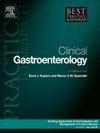Novel devices and biomarkers in screening for esophageal squamous cell cancer
IF 3.2
3区 医学
Q2 GASTROENTEROLOGY & HEPATOLOGY
Best Practice & Research Clinical Gastroenterology
Pub Date : 2025-03-01
DOI:10.1016/j.bpg.2025.102005
引用次数: 0
Abstract
Esophageal squamous cell carcinoma (ESCC) remains a significant global health challenge, with high mortality rates primarily due to late-stage diagnosis. Detecting ESCC at an early stage, when still amenable to endoscopic resection, could potentially improve survival outcomes and help reduce the overall disease burden. However, despite being the gold standard for ESCC diagnosis, conventional endoscopy has several limitations that hinder its widespread implementation for screening purposes. These include high-costs, invasiveness, suboptimal sensitivity in identifying precancerous lesions, and prerequisite specialized personnel and facilities. In this review, we aim to discuss the current ESCC screening practices and explore emerging screening methods incorporating novel diagnostic devices and biomarkers.
We first present advancements in endoscopic imaging techniques aimed at improving diagnostic accuracy and reducing operator dependency. These include artificial intelligence (AI)-assisted endoscopy, which enhances lesion detection, and confocal laser endomicroscopy, which enables real-time cellular-level assessment. Next, we explore the available non-endoscopic screening modalities such as swallowable cytology-based sampling devices. These minimally invasive tools, when combined with AI-assisted cytological analysis and molecular biomarkers, offer a viable alternative to conventional biopsy for early ESCC detection. We then provide an overview of circulating biomarkers, including circulating tumor DNA (ctDNA), circulating tumor cells (CTCs), microRNAs, and protein-based markers, summarizing the current state of research on liquid biopsies and their potential role in ESCC screening. Additionally, we discuss breath and salivary diagnostics as emerging cost-effective, non-invasive approaches. Finally, we present the latest insights into tissue biomarkers, highlighting their relevance in identifying precancerous lesions and stratifying risk in ESCC screening.
用于食管鳞状细胞癌筛查的新设备和生物标志物
食管鳞状细胞癌(ESCC)仍然是一个重大的全球健康挑战,其高死亡率主要是由于晚期诊断。在早期阶段检测ESCC,当仍然适合内镜切除时,可能会改善生存结果,并有助于减轻总体疾病负担。然而,尽管作为ESCC诊断的金标准,常规内窥镜检查有几个限制,阻碍了其在筛查目的中的广泛实施。这些因素包括高成本、侵入性、识别癌前病变的灵敏度不够理想,以及必要的专业人员和设施。在这篇综述中,我们旨在讨论当前ESCC的筛查实践,并探索结合新型诊断设备和生物标志物的新兴筛查方法。我们首先介绍了内窥镜成像技术的进展,旨在提高诊断准确性和减少对操作者的依赖。其中包括人工智能(AI)辅助内窥镜检查,增强病变检测,共聚焦激光内窥镜检查,实现实时细胞水平评估。接下来,我们探讨可用的非内窥镜筛查方式,如可吞咽细胞学为基础的取样装置。这些微创工具与人工智能辅助细胞学分析和分子生物标志物相结合,为早期ESCC检测提供了一种可行的替代方法。然后,我们概述了循环生物标志物,包括循环肿瘤DNA (ctDNA)、循环肿瘤细胞(CTCs)、microrna和基于蛋白质的标志物,总结了液体活检的研究现状及其在ESCC筛查中的潜在作用。此外,我们讨论呼吸和唾液诊断作为新兴的成本效益,非侵入性的方法。最后,我们介绍了组织生物标志物的最新见解,强调了它们在ESCC筛查中识别癌前病变和分层风险方面的相关性。
本文章由计算机程序翻译,如有差异,请以英文原文为准。
求助全文
约1分钟内获得全文
求助全文
来源期刊
CiteScore
5.50
自引率
0.00%
发文量
23
审稿时长
69 days
期刊介绍:
Each topic-based issue of Best Practice & Research Clinical Gastroenterology will provide a comprehensive review of current clinical practice and thinking within the specialty of gastroenterology.

 求助内容:
求助内容: 应助结果提醒方式:
应助结果提醒方式:


